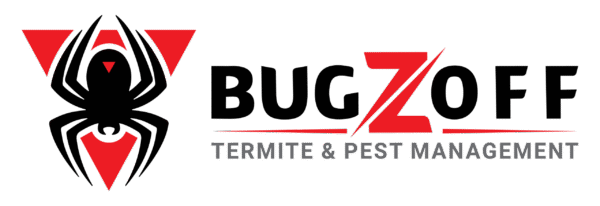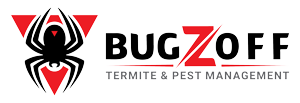Textile Pests
Textile Pests – Protecting Fabrics and Upholstery from Infestations in Australia
Textile pests are a major concern for homes, businesses, museums, and storage facilities across Australia. These pests infest and damage clothing, carpets, furniture, and stored textiles, often going unnoticed until severe damage has occurred.
Textile-damaging insects thrive in dark, undisturbed areas such as wardrobes, attics, storage rooms, and beneath furniture. If left untreated, they can cause irreversible destruction to valuable fabrics, antique textiles, and upholstery.
At BUGZOFF Pest Control, we specialise in identifying, eliminating, and preventing textile pest infestations to ensure long-term fabric protection.
Why Are Textile Pests Considered a Threat?
Textile pests feed on natural fibres such as wool, silk, fur, and cotton, weakening fabrics and causing holes, thinning, and fraying. They can infest homes, hotels, heritage buildings, and clothing stores, leading to:
- Property damage, including the destruction of clothing, carpets, curtains, upholstery, and stored textiles
- Financial losses due to costly repairs, replacements, and cleaning of infested items
- Health concerns, as some textile pests cause allergic reactions and respiratory issues
- Damage to museums and archives, where priceless historical textiles, books, and artwork may be destroyed
Early detection and professional pest management are crucial to preventing widespread textile damage.
Common Textile Pest Species in Australia
Clothes Moths (Tineola bisselliella and Tinea pellionella)
- Small, golden-brown moths that lay eggs on wool, silk, fur, and cashmere
- Larvae (not adults) cause damage by feeding on natural fibres, leaving holes in clothing and upholstery
- Often found in dark storage areas such as closets, drawers, and carpeted spaces
Carpet Beetles (Anthrenus verbasci and Attagenus unicolor)
- Small, oval-shaped beetles that infest wool carpets, rugs, and upholstery
- Larvae, also known as “woolly bears,” are furry and reddish-brown, causing textile damage
- Often found along carpet edges, in furniture seams, and hidden storage areas
Booklice (Psocoptera)
- Tiny, wingless insects that feed on fabric starch and bookbinding glue
- Common in libraries, archives, museums, and paper storage areas
- Prefer humid conditions and are frequently found in damp environments
Silverfish (Lepisma saccharina)
- Fast-moving, silver-grey insects that damage books, wallpaper, and natural fabrics
- Feed on cotton, linen, and starched clothing stored in wardrobes and storage units
- Thrive in humid areas such as basements, kitchens, and storage rooms
Signs of a Textile Pest Infestation
Textile pests are often difficult to spot because they hide in dark, undisturbed areas. However, certain warning signs indicate an infestation:
- Holes in clothing, carpets, and upholstery, often irregular in shape
- Fraying or thinning fibres, causing weakened or brittle fabric
- Presence of larvae or shed skins, particularly in hidden storage areas
- Accumulated insect waste or frass, which appears as powdery debris
- Musty odours in infested areas, especially where carpet beetles are present
- Increased insect activity around stored textiles and fabric-covered furniture
If any of these signs are noticed, immediate action should be taken to prevent further textile damage.
Problems Caused by Textile Pests
Property Damage
- Infestations can lead to the destruction of clothing, upholstery, and carpets
- Antique textiles, museum exhibits, and valuable fabric collections are at risk
- Hotels, clothing stores, and furniture retailers suffer significant financial losses
Allergic Reactions & Skin Irritation
- Some textile pests shed hair or leave behind skin particles that trigger allergic reactions
- Infestations can worsen asthma, respiratory issues, and dermatitis
Economic Loss for Businesses
- Textile manufacturers, retailers, and antique collectors suffer financial losses due to fabric contamination
- Carpet and furniture damage leads to expensive restoration and replacements
Spread of Infestations
- If left untreated, pests move between clothing, carpets, and stored items, increasing infestation severity
- Infestations can spread between homes, warehouses, and commercial facilities
How to Prevent and Control Textile Pest Infestations
Regular Cleaning & Vacuuming
- Vacuum carpets, upholstery, and storage areas frequently to remove pest larvae, eggs, and debris
- Pay special attention to hidden areas, including under furniture, inside closets, and behind curtains
Proper Storage of Clothing & Textiles
- Store off-season clothing, blankets, and fabrics in sealed, airtight containers
- Use garment bags for delicate textiles such as silk, wool, and fur
Reduce Humidity & Moisture
- Many textile pests thrive in humid conditions, so storage areas should be kept dry and well-ventilated
- Use dehumidifiers in basements, closets, and storerooms to prevent moisture build-up
Wash & Freeze Infested Items
- Wash clothing and textiles in hot water above 50°C to kill larvae and eggs
- Freezing infested items for 48 hours can also eliminate textile pests
Use Natural Repellents & Deterrents
- Cedar blocks, lavender sachets, and mothballs help deter clothes moths and carpet beetles
- Essential oils such as eucalyptus and peppermint can act as natural textile pest repellents
Professional Pest Control Services
- If a large infestation is detected, expert pest control specialists should be consulted to apply targeted treatments
How BUGZOFF Can Manage Textile Pest Infestations
At BUGZOFF Pest Control, we offer specialised textile pest management to protect homes, businesses, and heritage sites from fabric-destroying pests.
Our Textile Pest Control Services Include:
- Comprehensive Inspections – Identifying pest species and infestation levels
- Targeted Treatments – Applying safe, effective treatments to eliminate textile pests
- Preventive Measures – Implementing humidity control, proper storage solutions, and pest-proofing techniques
- Ongoing Monitoring & Maintenance – Ensuring long-term protection against reinfestation
Protect Your Textiles with BUGZOFF Pest Control
Don’t let textile pests ruin your clothing, furniture, or valuable fabrics. Contact BUGZOFF Pest Control today for professional textile pest treatment and prevention solutions.
Frequently Asked Questions
What are textile pests?
Textile pests are insects and other arthropods that damage fabrics and textiles
What types of textiles do textile pests damage?
Textile pests can damage a variety of textiles, including clothing, furniture, carpets, and other items made of natural fibres.
Can textile pests damage synthetic fabrics?
While textile pests primarily damage natural fibres, they may also damage some synthetic fabrics, such as nylon or polyester.
Are textile pests harmful to humans?
Most textile pests are not harmful to humans, but they can cause allergic reactions in some people.
Prevention and Control
How can I prevent textile pests from infesting my home?
Regularly clean your home, store items properly, and seal cracks and crevices to prevent textile pests from entering.
What should I do if I find signs of a textile pest infestation?
If you suspect a textile pest infestation, inspect your belongings carefully and take appropriate action. This may involve cleaning, treating the items, or contacting a professional pest control service.
Can I treat a textile pest infestation myself?
For minor infestations, you may be able to treat the problem yourself by cleaning and storing items properly. However, for severe infestations, it is recommended to consult a professional pest control service.


